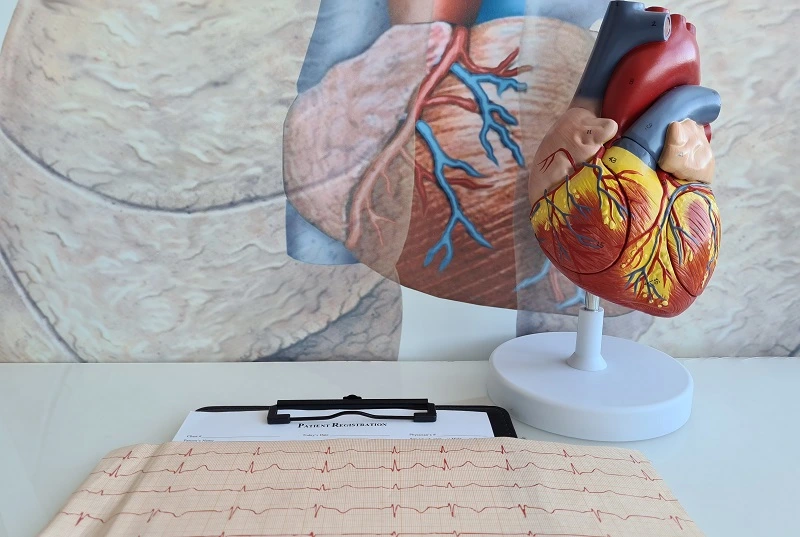General Health
Understanding Arteries & Their Health Disorders

Table of Contents
To function optimally in circulating blood throughout the body, the heart relies on the role of blood vessels, including the arteries. Arteries are blood vessels that carry oxygen-rich blood from the heart to the entire body.
These blood vessels branch out to deliver oxygen, nutrients, and hormones needed by various organs. Let’s explore the function, anatomy, and various diseases associated with arteries in detail below.
What Are Arteries?
Arteries are muscular, tube-like, and elastic blood vessels whose primary role is carrying oxygen-rich blood from the heart to various body parts. There are several types of arteries located throughout the human body, including:
-
Aorta: The largest artery located at the top of the heart.
-
Carotid artery: Found in the neck, this artery delivers blood to the brain, face, and head.
-
Bronchial artery: Supplies blood to the lungs.
-
Pericardial artery: Located in the torso, it carries blood to the pericardium of the heart.
-
Celiac trunk: Distributes blood to the liver, spleen, and stomach.
-
Inferior phrenic artery: Carries blood to the diaphragm.
-
Renal artery: Supplies blood to the kidneys.
-
Lumbar artery: Distributes blood to the spine and spinal cord.
-
Brachial artery: Carries blood to the upper arm.
-
Radial and ulnar arteries: Run along the arm and supply blood to the hands and wrists.
-
Femoral artery: Supplies blood to the thigh.
-
Popliteal artery: Transports blood to the area below the knee.
-
Tibial artery: Delivers blood to the feet and ankles.
Anatomy of Arteries
Arteries are blood vessels composed of three main layers: the tunica intima, tunica media, and tunica adventitia. Here are the details for each layer:
-
Tunica intima: The innermost layer of the artery, made up of a membrane and elastic fiber tissue.
-
Tunica media: The middle layer of the artery with the thickest structure. This layer consists of elastin and smooth muscle.
-
Tunica adventitia: The outermost layer of the artery, composed of elastin and collagen fibers that add strength. This layer allows the artery to expand and contract, helping to regulate blood pressure.
Function of Arteries
The primary function of arteries is to carry blood from the heart to various parts of the body. The blood transported by the arteries is rich in oxygen, nutrients, and hormones essential for the optimal functioning of the body's organs.
Difference Between Arteries and Veins
Although both arteries and veins are categorized as blood vessels, they have different bodily functions. Arteries are blood vessels responsible for carrying oxygen-rich blood from the heart to the rest of the body. In contrast, veins transport deoxygenated blood back to the heart.
Additionally, the anatomy of arteries tends to be thicker and more elastic than veins. This is because blood flowing through arteries has higher pressure than the blood flowing through veins.
Various Diseases of Arteries
Several types of diseases can affect the function and performance of the arteries, including the following:
1. Coronary Artery Disease (CAD)
Coronary artery disease is a medical condition caused by plaque buildup within the coronary arteries. The common symptoms of CAD include chest pain, shortness of breath, palpitations, cold sweats, nausea, and vomiting.
2. Atherosclerosis
Atherosclerosis is a medical condition characterized by the hardening or narrowing of the arteries due to plaque buildup, consisting of fats, cholesterol, and calcium. This condition should warrant caution, as it can disrupt blood flow to the body.
3. Peripheral Artery Disease (PAD)
Peripheral artery disease is caused by the blockage of peripheral arteries, which carry blood from the heart to the limbs or legs. This condition can also result from atherosclerosis. The risk factors for PAD include:
4. Aortic Aneurysm
An aortic aneurysm is a medical condition characterized by the bulging of the aortic walls. It can be triggered by atherosclerosis, vasculitis, aortic injury, or uncontrolled hypertension. Aortic aneurysms often show no symptoms and are usually discovered during routine health checkups.
5. Pulmonary Hypertension
Pulmonary hypertension is high blood pressure in the arteries of the lungs or the right side of the heart. The primary cause of pulmonary hypertension is blockage or damage to the capillaries or arteries in the lungs. As a result, the blood from the right side of the heart cannot flow properly to the lungs.
How to Keep the Arteries Healthy
Arterial health can be maintained by adopting a healthy lifestyle. Here are some ways to help keep your arteries healthy:
-
Limit the intake of trans fats and foods high in salt.
-
Exercise regularly.
-
Avoid smoking.
-
Get sufficient sleep, at least 7–9 hours per night.
-
Manage stress effectively.
-
Maintain a healthy weight.
-
Limit the consumption of alcoholic beverages.
-
Control hypertension, high cholesterol, and any diabetes-related conditions.
Arteries are blood vessels responsible for transporting oxygen-rich blood throughout the body. It is crucial for each individual to take good care of their arterial health to support overall well-being.
This information about arteries is only for educational purposes and should not be used as a substitute for professional medical advice. Therefore, if you have any concerns regarding your vascular health, do not hesitate to consult a Cardiologist at the nearest Siloam Hospitals.
You can use the MySiloam app to easily access health services, such as browsing doctors’ schedules, booking an appointment with the relevant doctor, and monitoring your health examination results online. Download MySiloam now to enjoy various features that can facilitate your healthcare journey.









